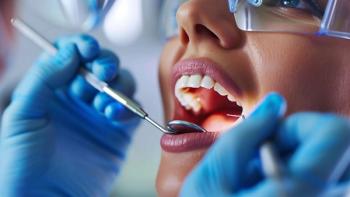
TIL Therapy Uses the Body’s Own Cells to Attack Cancer Cells in Melanoma
Key Takeaways
- TIL therapy uses a patient's own T cells, expanded in vitro, to target cancer cells, offering a personalized treatment approach.
- Amtagvi (lifileucel) is the first FDA-approved TIL therapy for advanced melanoma, marking a significant milestone in cancer treatment.
An expert explained how a patient’s own T cells can be extracted, manufactured and infused back into the body as a treatment option for melanoma.
Tumor-infiltrating lymphocyte (TIL) therapy is a promising new approach to cancer therapy that harnesses the body’s own immune system to treat diseases like melanoma, a type of skin disease, an expert said.
In February 2024, Amtagvi (lifileucel) was the first
As research progresses, TIL therapy may become a more accessible and effective treatment for other cancers.
CURE® spoke with Dr. Goran Micevic, assistant professor of dermatology and dermatopathology at Yale and member of the Yale Cancer Center, to learn more about TIL therapy and how the science behind it.
Transcript:
TIL therapy is kind of a new old therapy because the concept behind TIL therapies has been around for several decades really. It's been spearheaded at the surgery branch at the National Cancer Institute by Dr. Steven Rosenberg.
But the basic idea is that you take T cells, which are, you know, immune cells that can recognize foreign threats from the patient, you expand them outside of the patient's body and then you reinfuse them in an effort to battle cancer.
And so this is kind of a live therapy, as opposed to chemotherapies, which are chemicals and molecules, and as opposed to immune therapies, which we've kind of [been] witnessing the revolution [of], which are still molecules. So these are live cells, and they're the patient's own cells.
And it is a fairly complex therapy, and it's gone over several iterations, and usually is available only in an inpatient setting, or at least has been so far. And the reason for that is that when you infuse somebody with their own T cells, there's a lot of preparatory work that you need to do. So it's not unlike a bone marrow transplant. It's very involved really. So you have to prepare the patient and essentially immunosuppress them.
So you give them a lymphoablative therapy over a period of about a week prior to them receiving their own cells, and then when they receive the cells, you still have to receive what we call interleukin-2, high-dose interleukin-2, which is a chemical that actually activates T cells to kind of wake them up from their slumber. But you know that treatment also induces some unpleasant symptoms which are not unlike an inflammatory condition called sepsis.
For more news on cancer updates, research and education, don’t forget to




